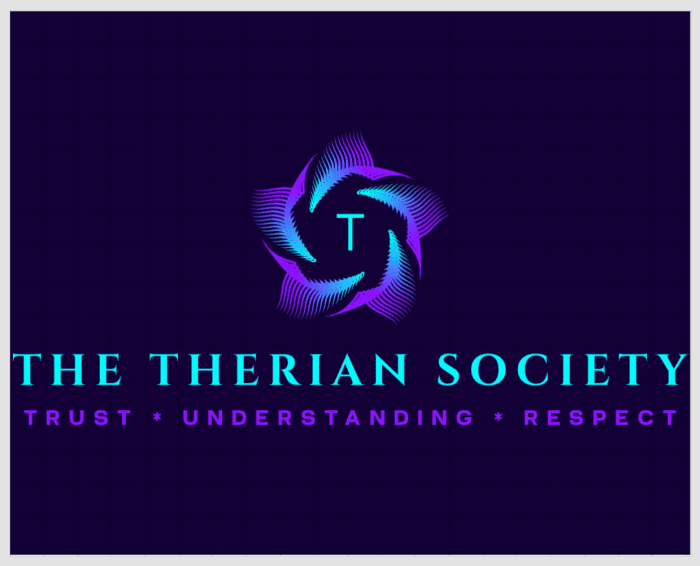Therianism is a subculture and personal identity concept where individuals, known as therians, believe they have a spiritual, psychological, or metaphysical connection to non-human animals. This belief often manifests as identifying with or feeling an inner connection to a specific animal species, often referred to as one’s “theriotype.” Therians may experience this connection in various ways, including through dreams, meditation, behaviors, instincts, or other personal experiences.
Overview of Therianism
1. Definition and Key Concepts
– Therianthropy: Derived from the Greek words “therion” (wild animal) and “anthropos” (human), therianthropy refers to the belief or feeling that one is spiritually or psychologically connected to a non-human animal.
– Therian: A person who identifies as a non-human animal, either spiritually or psychologically. This identity is typically lifelong and not limited to specific roles, costumes, or role-playing.
– Theriotype: The specific animal species a therian identifies with or feels a strong connection to. Theriotypes can include any non-human animal, such as wolves, big cats, birds, or even extinct species like dinosaurs.


2. Forms of Connection
– Psychological Connection: Therians may feel their identity as an animal is part of their psyche or personality. They may experience animalistic instincts, urges, or thought patterns.
– Spiritual Connection: Some therians believe their animal identity is spiritual, perhaps rooted in past lives, spiritual guides, or other metaphysical explanations.
– Phenotypes and Shifts: Therians may experience “shifts,” which are changes in mindset or behavior that align more closely with their theriotype. These can include mental shifts (mindset), sensory shifts (perception), or phantom shifts (feeling phantom limbs like tails or wings).
3. Common Misconceptions
– Not Role-Playing or Costuming: Therianism is not about wearing costumes, acting out animal roles, or participating in games. While some therians might engage in role-playing, it is not inherently tied to their therian identity.
– Not Linked to Otherkin or Furries: Although similar, therianism is distinct from otherkin (those who identify as mythological beings) and furries (fans of anthropomorphic animals and related art and culture). Therians often emphasize a personal, non-performative connection to real animals.
Historical and Cultural Context
1. Origins and Evolution
Therianism’s modern expression emerged in the late 20th century, particularly through online communities in the 1990s. Early internet forums, Usenet groups, and websites provided spaces for individuals with similar feelings to connect, share experiences, and develop a collective identity.
2. Cross-Cultural Parallels
Similar concepts appear in various cultures and spiritual traditions, such as totemism, shapeshifting myths, and animal spirit guides. While these traditions are not identical to therianism, they reflect humanity’s longstanding fascination with animal identities and connections.


Therian Community
1. Online Presence and Social Dynamics
The internet is a central aspect of the therian community, providing a platform for discussion, support, and expression. Social media, forums, and dedicated websites allow therians to explore their identities, connect with others, and share art, literature, and personal stories.
2. Common Practices and Expression
– Art and Writing: Many therians express their identities through creative outlets, including art, poetry, and storytelling.
– Shifting Practices: Some engage in deliberate shifting practices, like meditation or spending time in nature, to connect more deeply with their theriotype.
– Meetups and Howls: In-person gatherings, sometimes called “howls,” allow therians to socialize and connect in natural settings.
Challenges and Social Perception
1. Misunderstanding and Stigmatization
Therians often face misunderstanding or ridicule from the broader public, who may see their beliefs as odd or delusional. This stigma can lead to feelings of isolation or the need to hide their identity.
2. Mental Health and Well-Being
While being therian is not inherently linked to mental illness, the community emphasizes the importance of mental health. Some therians may struggle with identity confusion or societal pressures but find strength and self-understanding through their connection to their theriotype.


Ethics and Responsibilities
1. Respect for Animal Welfare
Therianism often includes a deep respect for animals and nature, aligning with values of conservation, animal rights, and environmental stewardship. Therians frequently advocate for ethical treatment of animals.
2. Community Guidelines
Respect, inclusivity, and open-mindedness are core values in the therian community. Members are encouraged to support one another’s experiences without judgment and to respect boundaries regarding personal beliefs.
Conclusion
Therianism represents a unique intersection of identity, spirituality, and psychology, offering individuals a way to understand themselves through the lens of animal connection. While often misunderstood, the therian community fosters a sense of belonging and self-exploration, allowing its members to embrace their unique way of being.
—
This discussion document provides an overview of therianism, highlighting its core beliefs, community dynamics, and challenges. Would you like more information on any specific aspect of therianism? Contact us using the form below or join one of our forums and join the discussions.
The comments section below is intended for feedback only. If you wish to join the discussion of this document please join the relevant forum as member.
Get support
Help is here if you need it. Reach out to one of our team or members. This form goes to our support address.

0 Comments